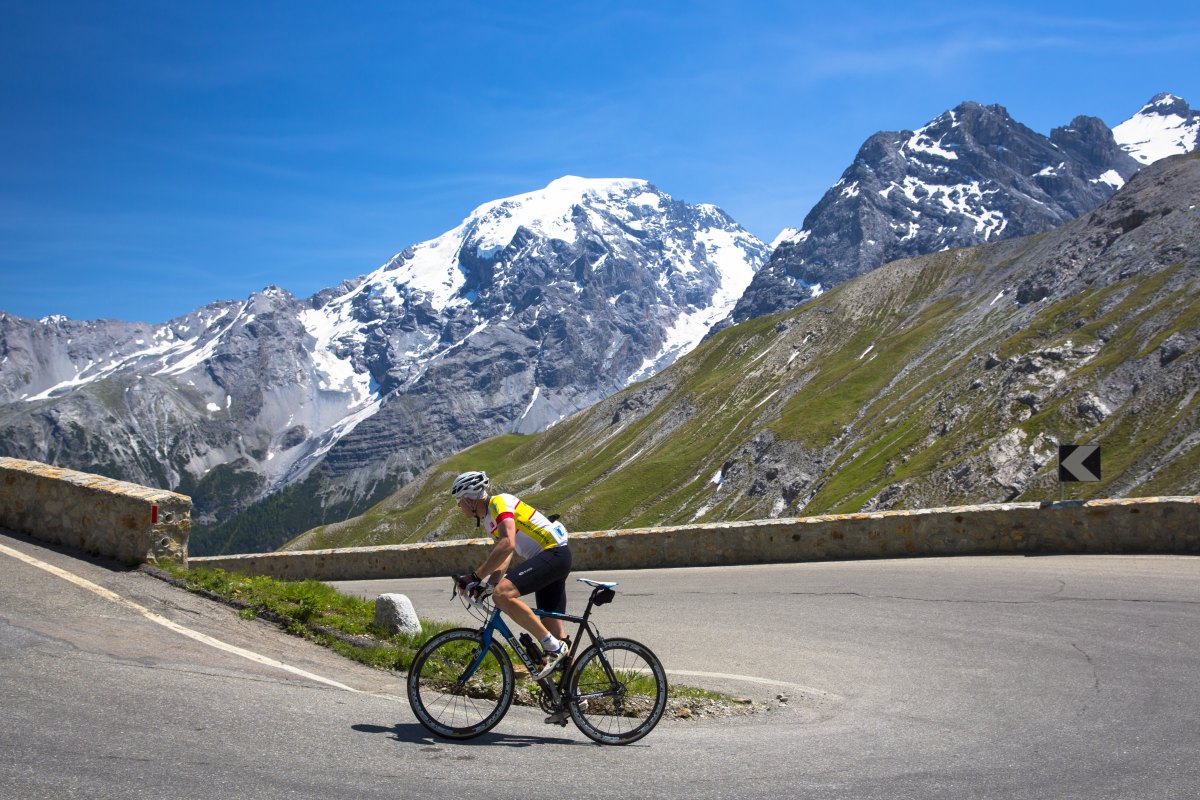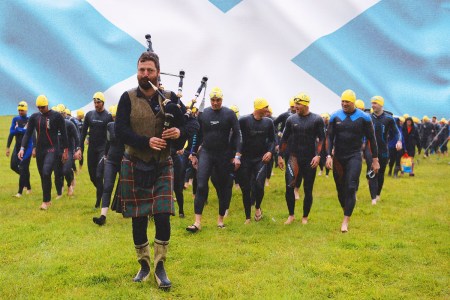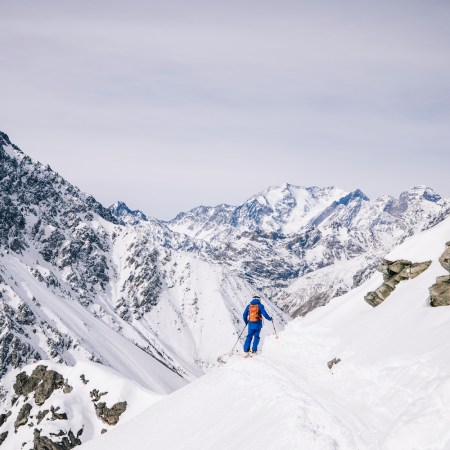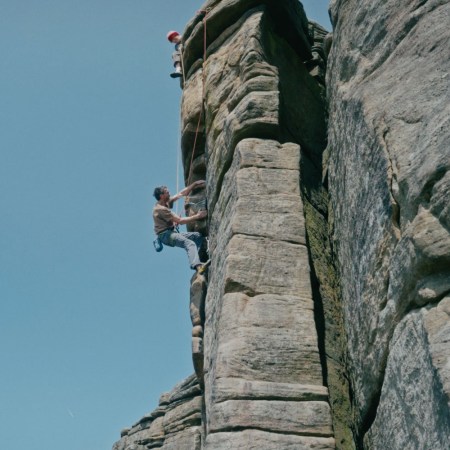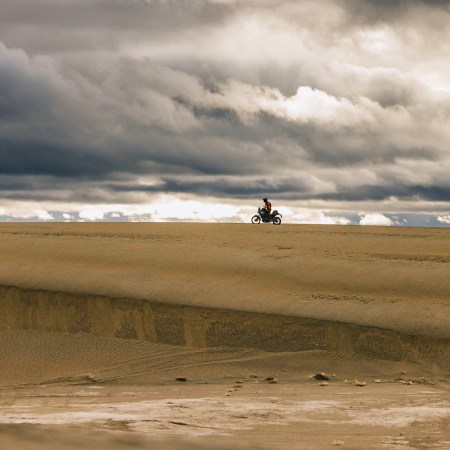Two years ago this month, an Irishman named Ronan McLaughlin cycled up and down a hill in County Donegal for six hours and 40 minutes.
By the time McLaughlin was finished, he’d done something remarkable, smashing the world “Everesting” record by nearly 20 minutes. The then-34-year-old, who’s been cycling professionally since 2008, biked the exact elevation of Mount Everest — riding up and down the same Mamore Gap hill, over and over again — in less time than it takes most to finish a workday.
Like most fringe endurance challenges, McLaughlin’s effort occurred in the middle of nowhere, with little fanfare, and only a pit crew comprised of family and photographers there for support.
It’s the sort of insider, rock-star achievement that every gung-ho rider is extremely familiar with, yet the rest of the world typically can’t fathom. Credit the Himalayan branding, though, for elevating how non-cyclists appreciate this sort of effort. Biking uphill for almost 9,000 meters is always going to sound like a form self-flagellation — but somehow, the “Mount Everest of it all” imbues the activity with purpose.
Like most diabolical endurance challenges, Everesting has one hell of a backstory. George Mallory, the Aussie grandson to the British mountaineer of the same name (who took part in the first three British expeditions of Everest, back in the early 1920s), decided to recruit some offbeat training for his expedition, by cycling up Mount Donna Buang, outside Melbourne. Eight ascents equaled 8,800 meters.
Years later, even after successfully completing the North Ridge of Everest — literally walking in the footsteps of his grandfather — Mallory rated his cycling escapades as more demanding.
How it works
Somehow, Everesting didn’t pick up much steam until 20 years after Mallory’s effort, when a “ultraclimber” named Andy van Bergen discovered the tale online, and went about codifying the challenge. Still — this era of endurance pursuits seems best suited for Everesting, anyway. Over the last few years, social media, pandemic boredom and satellite tracking apps have all collided to send cyclists (and runners) on bigger, wilder goose chases.
And while there are “fastest-known times” for specific segments all throughout the world, Everesting orients the challenge around the concept, not a geographical location. That’s to say: you could “Everest” your driveway 4,000 times, if you were so inclined. The customization is part of the challenge — and for this crazy and specific subculture, the fun.
In order to officially qualify for the Everesting website, which is operated by Australia’s Hells 500 cycling club, you must:
- Attain elevation gain of 8,848 meters on a single hill
- That hill cannot “loop,” you must ride it straight up and straight down
- No sleeping! Though you can stop to eat…it just counts against your time
- You have to record the effort on Strava or Zwift
- Electric bikes don’t count, obviously — road, MTB, CX, track, BMX and ElliptiGO all acceptable
- The segment must pass Hells 500’s Everesting calculator
The last point is important, as some hills could potentially have inclines on the descent (which yield riders extra meters, via “kinetic gain”). The Everesting site’s calulator, in which you can copy and paste a Strava segment, will helpfully indicate whether such “hoop-dee-doos” disqualify your hill or not. When in doubt: attack a hill as conventionally “up and down” as you can find.
The records
…are insane. Conventionally speaking, there’s McLaughlin’s sub-seven on the men’s side and Illi Gardner’s 8:03 from last summer on the women’s side. There are now nearly 25,000 “Everesters” in Hells 500’s Hall of Fame, compared to 6,098 summiters of the actual Mount Everest. (If you think that means Mallory was wrong, and the original activity is actually more difficult than its namesake, keep in mind — climbing Mt. Everest properly requires tens of thousands of dollars in provisions and gear, not to mention a decent chunk of time. Perhaps we can rest easy knowing that either activity is really freaking hard.)
Everesting’s core challenge has birthed an inevitable and steady supply of side quests. Our favorites? A 10-year-old named Jett Stokes achieved the youngest-ever Everest outside Sydney; a man named Charlie Rentoul has the mark for the fewest number of ascents needed, at two (he climbed the Seussian-steep Mauna Kea volcano, in Hawaii); “serial Everester” Arend VandenBroucke knocked down six Everests in a row, in an inconceivable 108 hours…when you start doing more than one, you’re allowed to sleep for two hours after each completion; and best of all, in 2018, a Californian named Ben Soja completed the challenge on a unicycle.
How Scotland’s Mighty Highlands Pioneered the Little-Known “Quadrathlon”
Inside the Great Kindrochit, one of the most difficult (and delightful) endurance challenges ever designedJealous runners
It should come as little surprise that ultrarunners — who frankly deserve a more intense prefix at this point, considering one among their ranks ran seven marathons in seven days on seven different continents last month — have also gotten in on the Everesting action.
The one key difference is that runners don’t have to run downhill; in order to spare their knees, the Everesting powers that be allow and advocate for “shuttled” descents. The endurance world operating as it does, though, the record that people talk about is non-shuttled. It was set by a man named Simon Grimstrup, who ran up and down a forest trail near his home for 10 hours and 45 minutes. It took him 202 hill repeats — and 31 total miles of uphill/downhill.
Attempt this at home?
In the words of Grimstrup: “[Everesting] is the hardest, stupidest, most epic thing I have ever done.” And that’s coming from a world-record holder. While outlandish endurance marks wouldn’t exist without athletes pushing past their mental boundaries, attempts can end very quickly if you aren’t acquainted with your physical boundaries. Hills can rip apart both spirits…and hamstrings.
Consider: you wouldn’t attempt a marathon tomorrow on zero training and a stomach full of Taco Bell. Everesting is an out-of-bounds cardio challenge for even well-seasoned athletes. It can take up to 12 hours for people who’ve cycled their entire lives. So be careful — assuming you have even an iota of earthly desire to schlep up and down a hill all day. But thanks to a special time in endurance sports, where nothing is ever impossible for long, perhaps, at least, you can find yourself admiring those who do.
The Charge will help you move better, think clearer and stay in the game longer. Subscribe to our wellness newsletter today.
